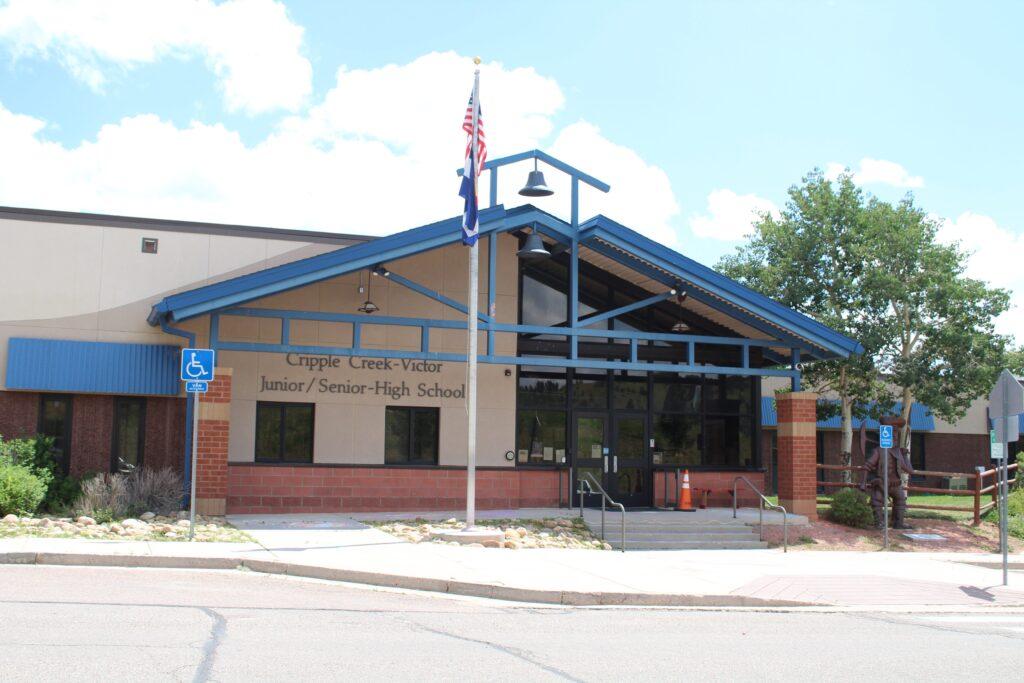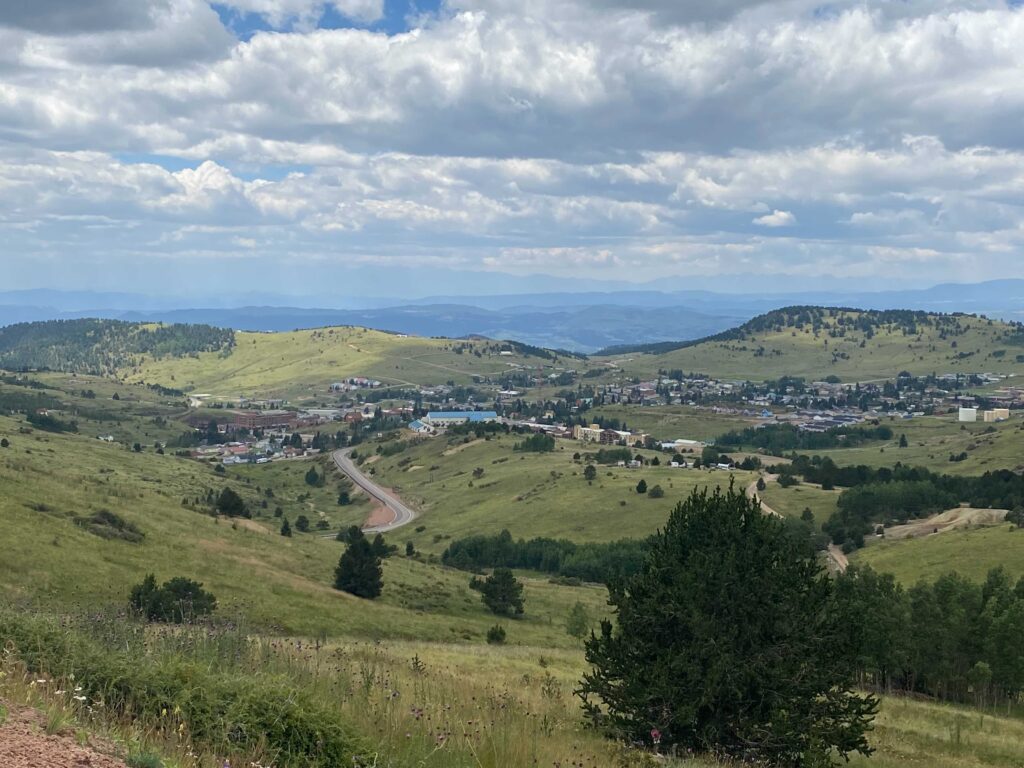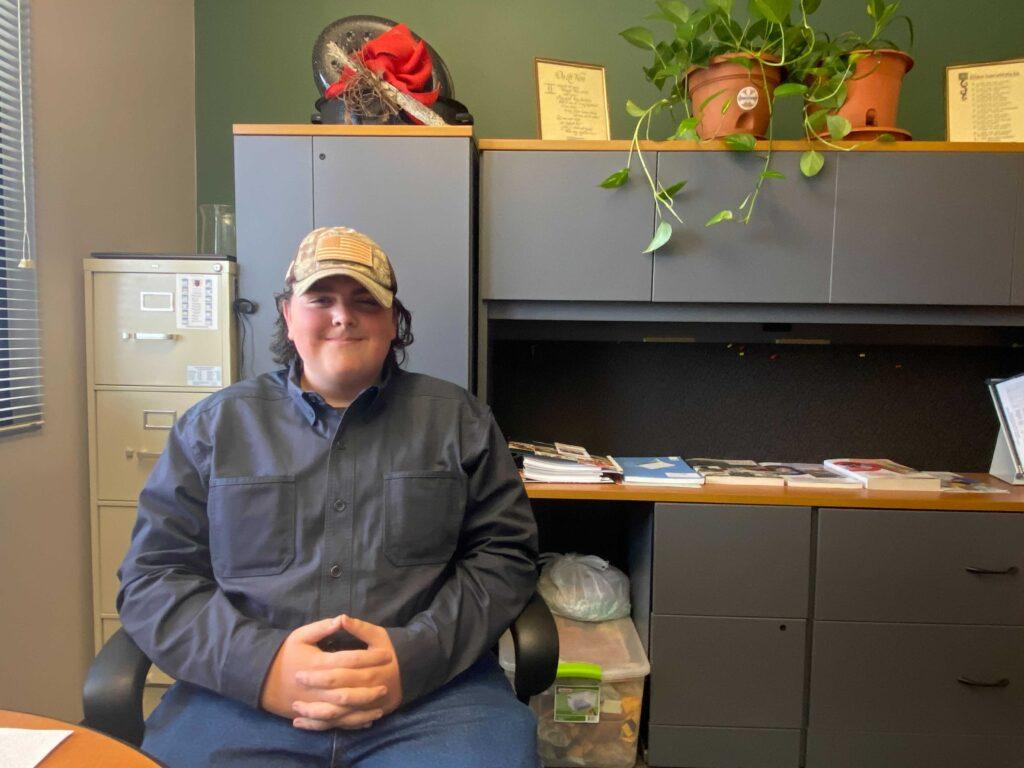
Standing outside on a concrete basketball court near the Cripple Creek Junior/Senior High school, Superintendent Miriam Mondragon points to stacks of steel pillars and siding.
"These are the materials," she said. "And it was nice because, a local excavator, he gave us a great deal on getting it transported. And the city of Cripple Creek, their public works department volunteered labor and heavy equipment to get everything moved and placed."
Once the structure is assembled it will be the site of a 9,000 square foot construction trades shop. There, high school students will earn certifications in things like electrical, masonry, and plumbing and on-the-job training as they complete a manufactured home.

The district has about 350 students in kindergarten through 12th grade with a four-year graduation rate of just under 85 percent. That's higher than the state average, but Mondragon said the real issue is finding work after graduation since only a handful of students go on to four-year colleges.
"I mean, it's great learning about ancient civilizations, but that doesn't really serve them when they walk out of these doors," Mondragon said.
Many kids in the district already have jobs. Mondragon said a lot of them work at the casinos that line historic downtown Cripple Creek, where they hire as young as 15.
"They have jobs because they have to help their families pay bills and put food on the table," she said, addressing some of the struggles that have led to limited opportunities for her students. "But it was also that our students were really disengaged in their education. I don't feel like they saw a lot of value in what they were learning when they were here."

So, the district decided to switch things up and make the high school experience more relevant to life after graduation. Mondragon said they wrote up a proposal, and a few weeks later the state announced grants funded by the CARES Act.
"We joke that the universe must have been listening to that conversation because it aligned directly with what we were trying to accomplish," she said.
Known as RISE grants, the acronym stands for Response, Innovation, and Student Equity. The district received $1.4 million, which breaks down to about $4,000 per student.
"I was just so overwhelmed with the fact that they believed in this district that much to give us that amount of money. I mean, it was close to what some universities were awarded," she said.
Mondragon hopes the trades shop will be finished by the spring semester. Bids on the project will be accepted through the beginning of September.
They have all the pieces, they just need someone to put them together.
Once a contractor is selected, the plan is for a Pueblo-based company called IndieDwell to step in. General Manager Ron Francis said they'll supply the district with the building materials to complete a home that, after it's done, will be sold into the community.
"Part of our mission is to get involved in the communities, particularly for education and raising the level of opportunities for those students that aren't necessarily going to go to four year-college," Francis said.
He estimated the value of the materials as between $30-40,000. And since Cripple Creek lacks affordable housing, the project will work to house someone in need.

Superintendent Miriam Mondragon said these opportunities could change a lot of things for the students here, including those like Ketcher Blevins, a junior at Cripple Creek Victor.
"First will be helping others with the houses that are supposed to be made, if everything goes to plan, and it builds a career for people that are passionate about it," he said.
In addition to the construction project, students will have the option to enroll in a culinary arts and hospitality program, as well as fire science and EMT training, all funded by the same grant.
That's what Blevins plans to do.
"I want to be an EMT and go to college, then be an FBI agent," he said.
While his plans are clearly laid out, the district is also offering a more general option for students who need a bit more exploration. Mondragon said the ultimate goal is to have every student participate in one of the programs, once available, in the hopes that they can start a career or internship with a livable wage, right out of school.
"That's what our kids needed," Mondragon said. "They needed hope."









